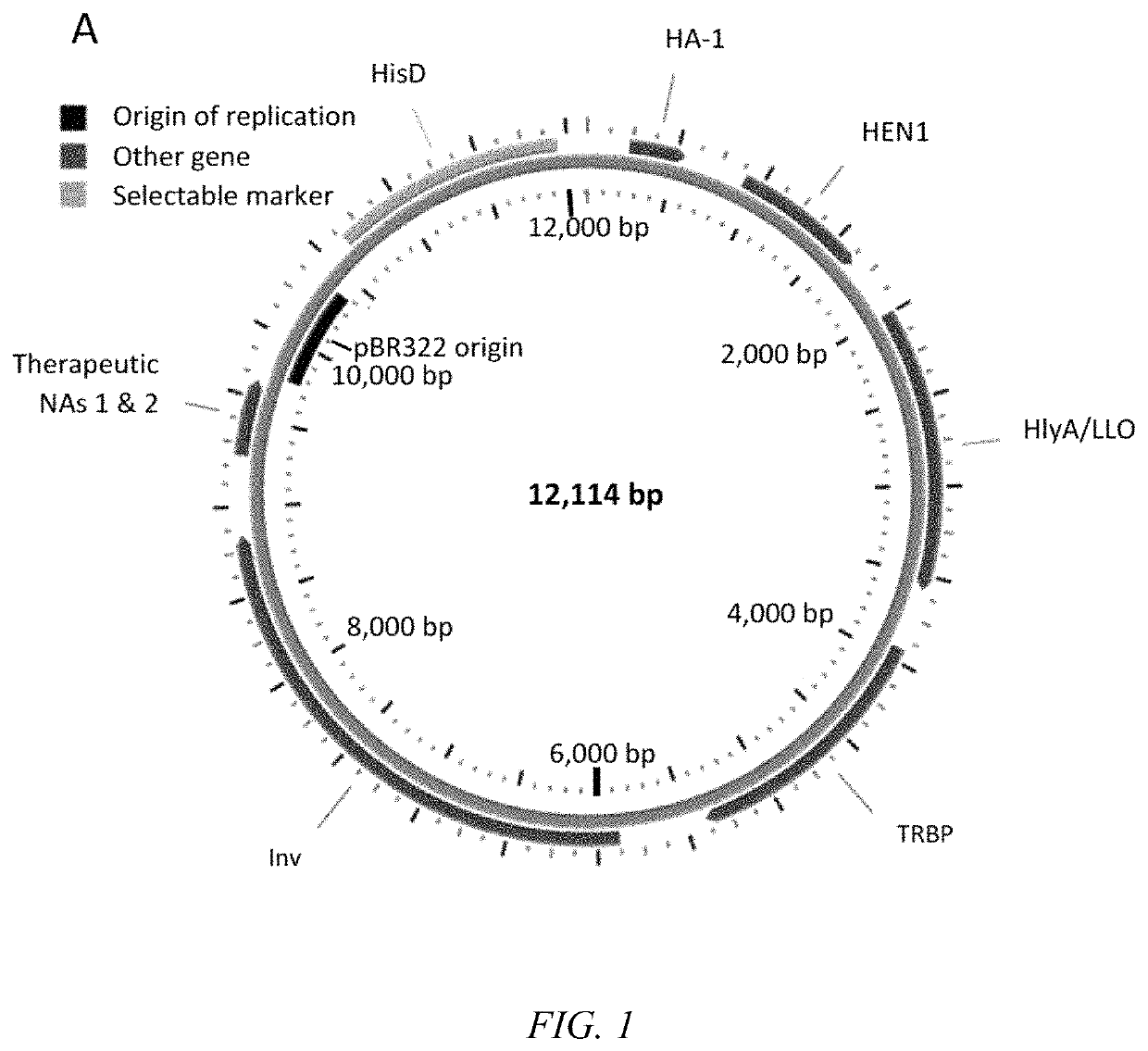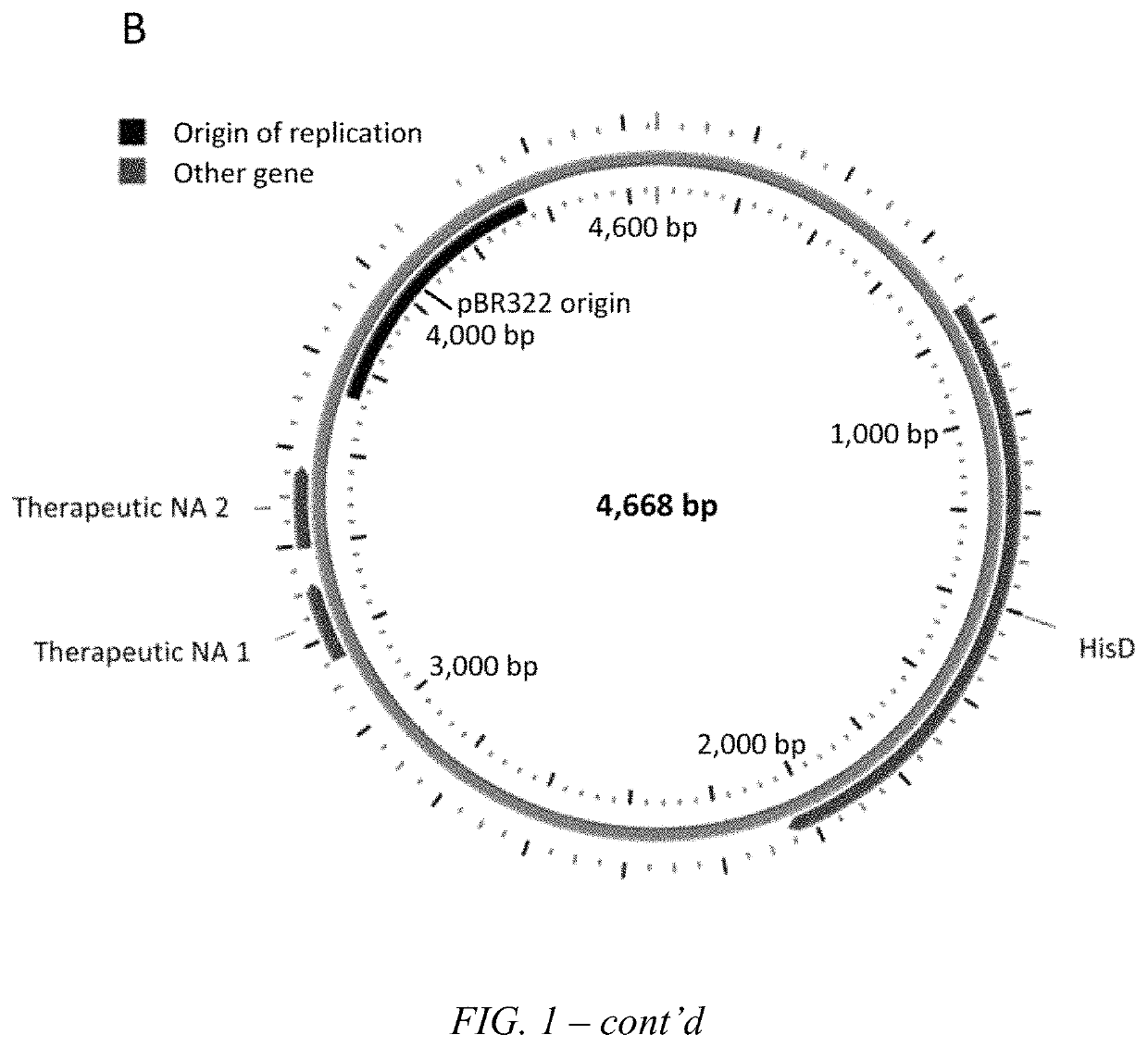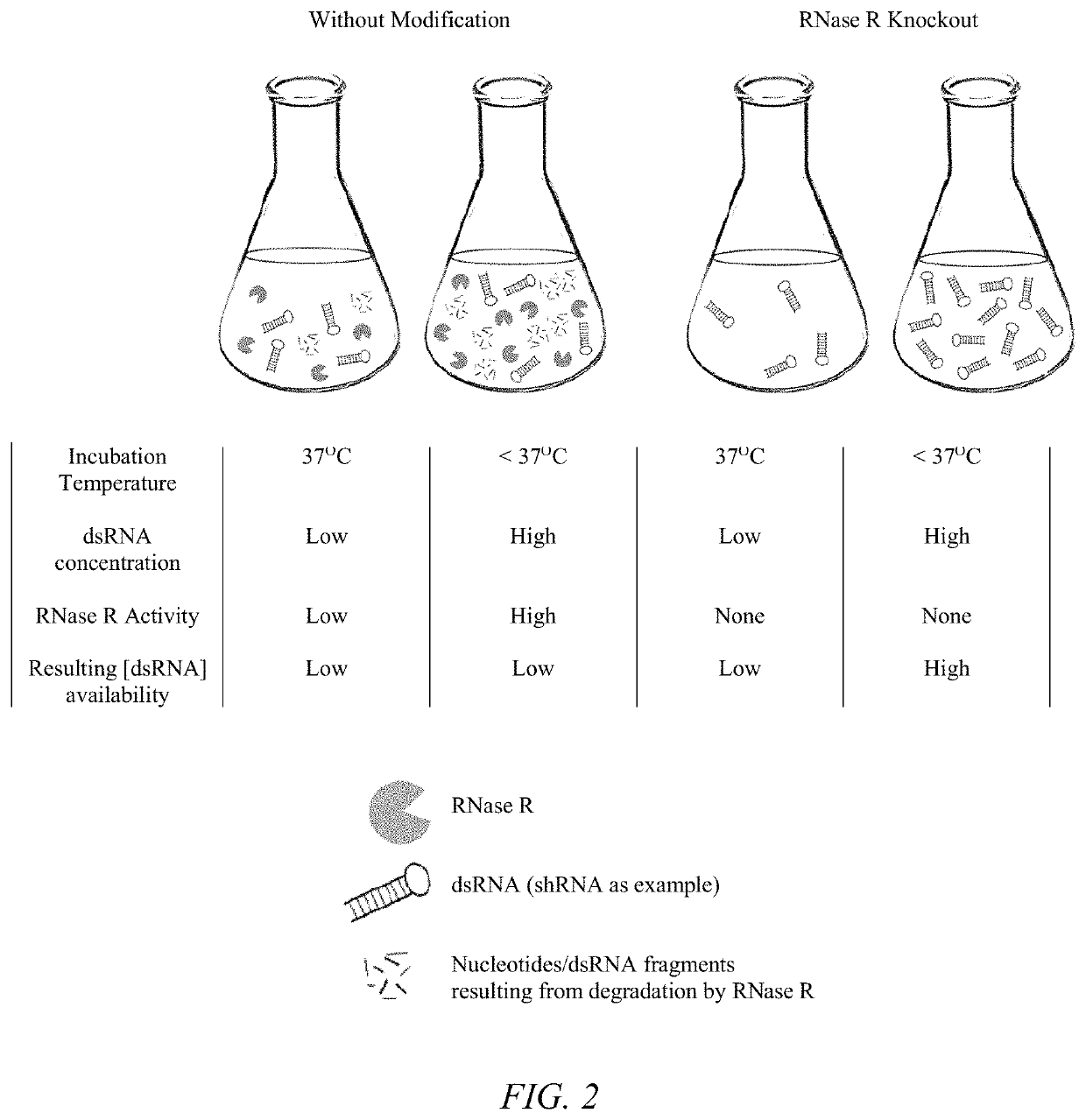Transkingdom platform for therapeutic nucleic acid delivery
a nucleic acid delivery and platform technology, applied in the field of disease treatment and prevention, can solve the problems of reducing the efficacy limiting the effectiveness of sirna and shrna, and affecting the ability of specific cells and tissues to harness their capabilities and clinical applications, and achieves the effects of enhancing the expression of these genes, reducing the phenotype of nucleic acid degradation, and increasing the stability, magnitude and/or
- Summary
- Abstract
- Description
- Claims
- Application Information
AI Technical Summary
Benefits of technology
Problems solved by technology
Method used
Image
Examples
example 2
nockout
[0035]In a second aspect, improving the properties of the delivery vehicle can be achieved by eliminating or reducing the activity of the enzyme responsible for RNA degradation. In bacteria such as E. coli, structured RNA duplex decay is exclusively carried out by RNase R, a hydrolytic 3′ to 5′ exoribonuclease (Matos 2009; Khemici and Carpousis; Cheng and Deutscher 2005; Vincent and Deutscher 2009; Awano et al 2007, Awano 2010; Chen et al 1998; Hossain 2015; Hossain 2016). As is the case with shRNA / siRNA molecules, RNase R is able to degrade these dsRNAs by specifically binding the 3′ single-stranded overhangs (Cheng and Deutscher, Vincent and Deutscher 2006). In fact, RNase R is the only 3′ to 5′ exoribonuclease capable of chewing through extensive secondary RNA structures (Vincent and Deutscher 2009). RNase R is a cold-shock protein encoded by the rnr gene and its activity can be modulated by altering the growth conditions of the bacterial cell (Chen et al 1998; Cheng and D...
example 3
on of the 3′ Terminal Nucleotide of the siRNA
[0036]In a third aspect, improving the properties of the delivery vehicle can be accomplished by including a gene, such as on a therapeutic NA generating plasmid, that will cause stabilizing methylation of the shRNA. As discussed above, degradation of dsRNA is predominately caused by exonucleases (Czauderna, et al. 2003). Methylation of the 3′ terminal nucleotide of siRNA can provide stabilizing effects against exonucleases, as it protects from 3′-5′ degradation and 3′ uridylation of siRNA (Ji & Chen 2012; Lifang, et al. 2010; Kurth & Mochizuki 2009; Chan, et al. 2009). RNAi activity is maintained when siRNA molecules are modified only at the terminus of the sense strand, or in the case of siRNA hairpins, the 3′-terminus (Czauderna, et al. 2003). Methylation of the 3′-terminus is required for functionality of all plant siRNAs and is observed in some mammalian and bacterial siRNAs as well. The HEN1 gene encodes the methyltransferase Hen1, ...
example 4
genic Bacteria Engineered to Express Influenza Hemagglutinin-1 (HA-1) Protein
[0037]In a fourth aspect, improving the localized and targeted delivery of the delivery vehicle to mucosal tissues, specifically respiratory mucosal tissues, could be achieved by engineering the bacterium to express the influenza hemagglutinin-1 (HA-1) protein either via genomic (chromosomal) or plasmid expression. HA-1 is a glycoprotein found on the surface of influenza viruses and facilitates viral attachment and entry into target cells by receptor mediated endocytosis (White et al. 1997). HA-1 represents the globular head which contains a receptor site that has high affinity for sialic acid, present on the surface of target cells, including respiratory mucosal epithelial cells (Russell et al 2008). In a preferred embodiment, HA-1 is expressed on the E. coli surface and interacts with sialic acid surface receptors on mucosal epithelial cells for bacterial uptake. The HA-1 protein could be derived from any...
PUM
| Property | Measurement | Unit |
|---|---|---|
| temperature | aaaaa | aaaaa |
| temperatures | aaaaa | aaaaa |
| temperature | aaaaa | aaaaa |
Abstract
Description
Claims
Application Information
 Login to View More
Login to View More - R&D
- Intellectual Property
- Life Sciences
- Materials
- Tech Scout
- Unparalleled Data Quality
- Higher Quality Content
- 60% Fewer Hallucinations
Browse by: Latest US Patents, China's latest patents, Technical Efficacy Thesaurus, Application Domain, Technology Topic, Popular Technical Reports.
© 2025 PatSnap. All rights reserved.Legal|Privacy policy|Modern Slavery Act Transparency Statement|Sitemap|About US| Contact US: help@patsnap.com



